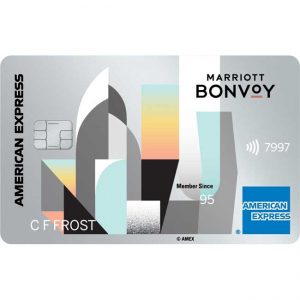When JPMorgan Chase & Co. announced in November it would soon start mass-issuing contactless Visa cards, industry experts expected the move to at last kickstart a trend in the U.S. payments industry toward tap-and-pay EMV plastic. But while most experts thought Chase’s decision might stir smaller banks to follow suit, it turns out at least one big rival is now expanding its own contactless portfolio—and is doing it especially with cobranded cards.
American Express Co. last week announced a root-and-branch rebranding of its card portfolio cobranded with the giant hotelier Marriott International Inc. But in a little-noted move, the entire new line of AmEx-Marriott cards—bearing the new “Bonvoy” brand—will incorporate contactless antennas when the revamped cards debut next month (Chase announced a contactless Bonvoy card with Marriott around the same time). Bonvoy is Marriott’s rebranded loyalty program.

“I can confirm that the rebranded Marriott Bonvoy American Express Card portfolio will feature contactless payment capabilities,” an AmEx spokesperson tells Digital Transactions News via email. “With the new card designs the Marriott Bonvoy American Express Card and the Marriott Bonvoy Business American Express Card will be contactless.” The Starwood Preferred Guest American Express Luxury card, which is part of this portfolio and will be rebranded the Marriott Bonvoy Brilliant American Express card, has been contactless since its debut in August, the spokeswoman says.
In addition, AmEx already issues a cobranded contactless card for the Hilton Hotels & Resorts chain, the American Express Hilton Honors card, and has also converted its Gold card portfolio to tap-and-pay capability, according to the spokesperson. She adds that if a consumer calls AmEx to request a contactless card, the company will issue one if the capability “is applicable for that card.”
The company will not say how many contactless cards these moves add up to or what percentage of the overall AmEx card portfolio they will represent when fully rolled out. AmEx has historically focused heavily on cobranded relationships and on rewards cards. It disbursed $9.7 billion in rewards last year, up 12% over 2017, according to company figures.
The expansion of AmEx’s contactless portfolio comes at a time when not just Manhattan rival Chase but also other issuers are introducing the technology years later than in the United Kingdom and other parts of the world. With the U.S. EMV chip card mandate requiring acquirers and merchants to install terminals that often include the capability to read near-field communication signals, about half of all Visa transactions were taking place at contactless-enabled locations, the card network said last year. These transactions occur on so-called dual-interface cards that can work with either an insertion into a terminal or via a contactless link.





